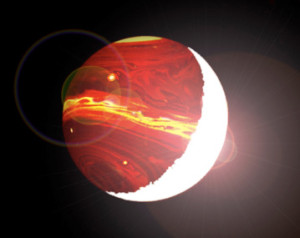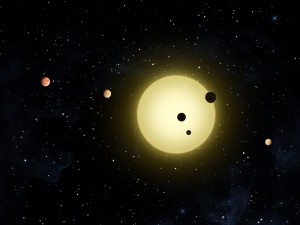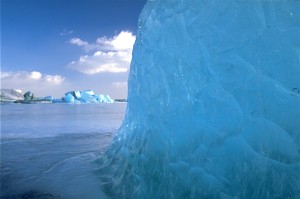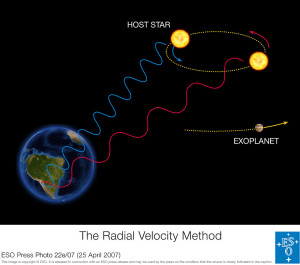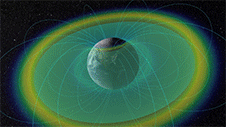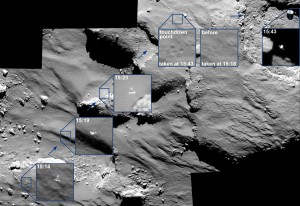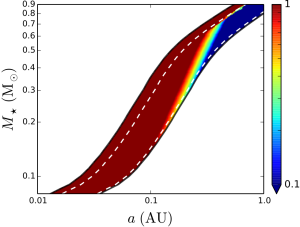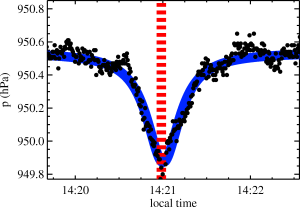
Pressure variations (in hectoPascal, hPa) vs. local time for one dust devil pressure dip. The blue curve shows our model fit.
Dust devils occur in arid climates on the Earth and ubiquitously on Mars. Martian dust devils have been studied with orbiting and landed spacecraft, while most studies of terrestrial dust devils have involved manned monitoring of field sites, which can be costly both in time and personnel. As an alternative approach, my colleague Ralph Lorenz and I performed a multi-year in-situ survey of terrestrial dust devils using pressure loggers deployed at El Dorado Playa in Nevada, USA, a site known for dust devil activity.
When a dust devil passed over our pressure sensors, it appeared as a pressure dip in the time series, as illustrated in the figure. By modeling these signals, we learned a lot of about dust devils. For instance, in spite of expectations, we found signals that looked a lot like dust devils that occurred at night and even in the winter. So do dust devils happen year-round, day and night? More work will help us figure it out.
Our paper on this study will appear soon in the Journal of Geophysical Research Planets.
